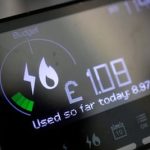EDF has left customers on its Economy 7 tariff wondering how they will be able to heat their homes this winter after the energy supplier almost doubled the price of its off-peak night-time rate.
On 1 January, most home energy users in Great Britain saw their bills rise by an average of 5% after the regulator Ofgem raised the price cap.
However, at the same time EDF pushed through a 91% increase in its E7 night-time rate.
Households that rely on Economy 7 have always paid a much cheaper rate to recharge their storage or water heaters through the night, and a more expensive daytime rate for electricity.
Users tend to be living in purpose-built flats, or older-style social housing without a gas connection – and are often on lower incomes. They were traditionally rewarded for using off-peak electricity produced when demand was low.
Tim Burton, who lives in rural Norfolk, told the Guardian that EDF had almost doubled the price he and others in the eastern region pay for their night-time electricity from 8.5p to 16.6p a kilowatt hour (kWh). It is a similar story across the country.
Households on standard variable tariffs with EDF are typically charged about 30p/kWh at any time of day and night if they pay by direct debit.
EDF has cut the E7 day rate to an average of 35.8p/kWh, but customers on the tariff say the price rise at night will more than offset any savings from that reduction.
“Each year 75% of our electricity is used for heating our home. So our recent price rise is not the routinely reported 5% but a massive hike of 38%,” Burton said.
“We feel as minority energy users living in a rural area our plight is being overlooked and our situation is being exploited by energy companies. To avoid an unsustainable annual energy bill we should ideally be investing in a heat pump. But this would require us to install a costly radiator system from scratch; and since my wife and myself are both 70 we would be highly unlikely to recoup this cost.”
Matthew Brown from St Albans said he was “reeling” after the EDF move and worried that his bill would double over the winter months.
“The cut in day time rate does not help. My flat uses Economy 7 and storage heaters, so my radiator and water heating is all at night,” he said. “I’m seeing daily costs of £3-£6 by 7am.”
skip past newsletter promotion
Sign up to Business Today
Free daily newsletter
Get set for the working day – we’ll point you to all the business news and analysis you need every morning
Enter your email address Enter your email address Sign upPrivacy Notice: Newsletters may contain info about charities, online ads, and content funded by outside parties. For more information see our Privacy Policy. We use Google reCaptcha to protect our website and the Google Privacy Policy and Terms of Service apply.
after newsletter promotion
Some of those affected only switched to EDF in recent months after investing in home batteries to take advantage of the night-time rate, which was one of the cheapest on the market.
Customers have questioned how EDF is still charging electric car owners just 8p/kWh for their night-time usage, while it had nearly doubled their rate. Electric car tariffs are only available to those with an electric vehicle.
An EDF spokesperson said it had taken the difficult decision to increase the overnight rates to reflect supply costs.
“Our standard variable prices are regulated by the price cap, which Ofgem sets based on its view of the cost to supply. The cost to supply has increased significantly in recent years and during this time we’ve worked hard to keep our prices as low as possible for our customers,” they said.
“The updated prices are still within Ofgem’s price cap, and as part of this change, we decreased the peak/daytime rates from January. We recognise the impact of the energy crisis on our customers and strive to maintain competitive prices.”





